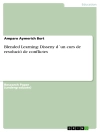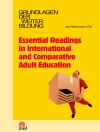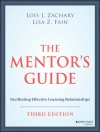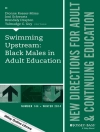This book explores the current challenges of teaching biophilic design within environmentally sustainable design (ESD) education. It shows how design frameworks and success matrices can be used within ESD education, explores the development of biophilic design frameworks and shows how design thinking can be used to adopt biophilic design within ESD education. It introduces the new ‚Process Bridging Technique (PBT)‘ that can be used to generate sustainable design frameworks able to fulfil the requirements of a performance-based approach and, at the same time, enhance human-nature connectedness.
Based on an educational design research project developed in the past two years at the University of Sydney, this book informs new approaches to ESD education and bridges the spheres of research, education, and profession. It serves as a practical guide on how to systematically develop a design framework that can be used in architecture education, while presenting the pioneering ‚Process Bridging Technique‘ developed by the authors.
Inhaltsverzeichnis
1 Introduction.- 2 Developing design frameworks: Challenges, strategies and tools.- 3 An elemental view to perceive the built environment.- 4 Process Bridging Technique.- 5 Developing a Biophilic Design Framework.- 6 Biophilic design thinking.
Über den Autor
Arianna Brambilla is a senior lecturer in architecture at the University of Sydney, Australia, and a Higher Education Academy fellow. Arianna has extensive experience in architecture studio teaching, especially focused on regenerative and sustainable design. Since 2017, she has been teaching sustainable design research studios in the Master of Architecture Program at the University of Sydney, where she started defining her teaching philosophy based on the experiential teaching approach, aimed at building students self-efficacy. Arianna is interested new teaching approaches that can enhance students’ environmental awareness and ability to autonomously develop assessment frameworks that can be used as design tools both in the studio and in their professional lives.
Niranjika Wijesooriya is an architect by profession, a chartered member of the Royal Institute of British Architects and corporate member of the Sri Lanka Institute of Architects, and the Societyof Environmental Engineers, United Kingdom. Niranjika has extensive experience in architectural teaching within the studio as well as professional consultancy in sustainable design. This guidebook is an outcome of her Ph D research project in Architecture at the University of Sydney, Australia. She currently leads the Centre for Biophilic Design, an interdisciplinary online forum promoting research, education and design to nurture human nature connectedness in built environment.
Lina Markauskaite is a Professor of Learning Sciences at the University of Sydney, Australia. Her research spans three related areas: students and teachers’ digital capabilities; professional learning for complex knowledge work and innovation; and technology-enhanced research methods. Her recent research projects have mainly focused on understanding the nature of complex professional knowledge work and learning, in inter-professional and inter-disciplinary contexts, and how to facilitateknowledge co-creation on emerging knowledge frontiers. Her work pays close attention to how people’s cognitive ability (‘thinking in the head’) is entwined with the environment and action in the world.












